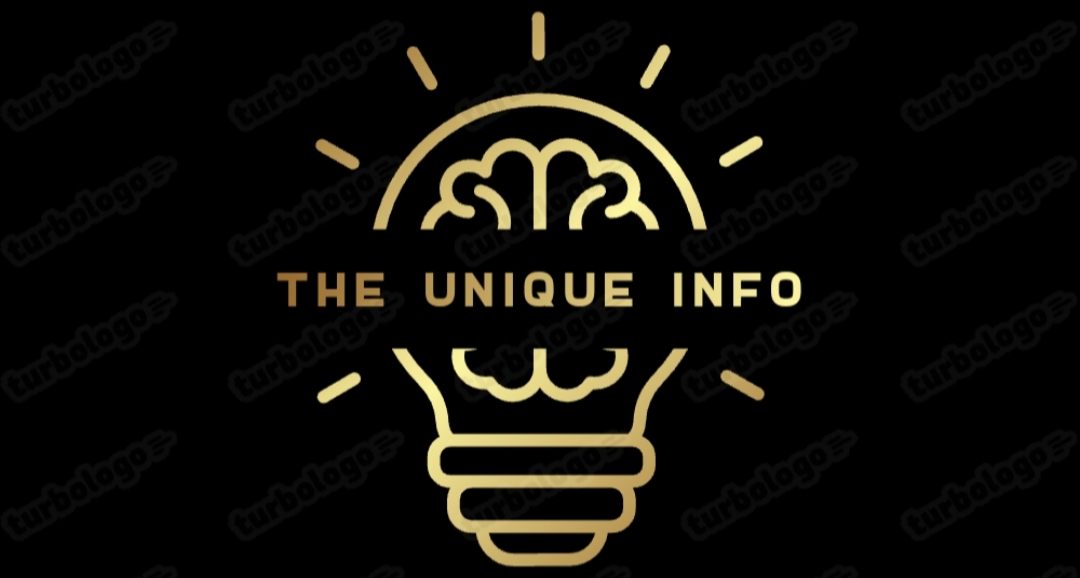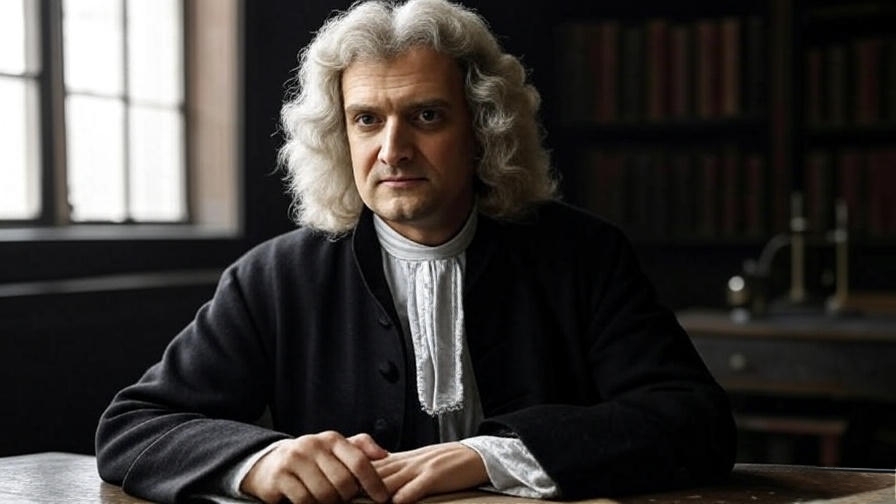Isaac Newton, a name synonymous with scientific revolution, is widely regarded as one of the most influential figures in the history of science. His groundbreaking work in mathematics, physics, and astronomy laid the foundation for many principles that shape our understanding of the universe today. From the laws of motion to the theory of gravity, Newton’s contributions transformed the way we view the world and the cosmos. This article explores Newton’s life, his discoveries, and his enduring legacy in a way that’s accessible to all readers, whether you’re a science enthusiast or simply curious about this remarkable man.
𝗘𝗮𝗿𝗹𝘆 𝗟𝗶𝗳𝗲 𝗮𝗻𝗱 𝗘𝗱𝘂𝗰𝗮𝘁𝗶𝗼𝗻
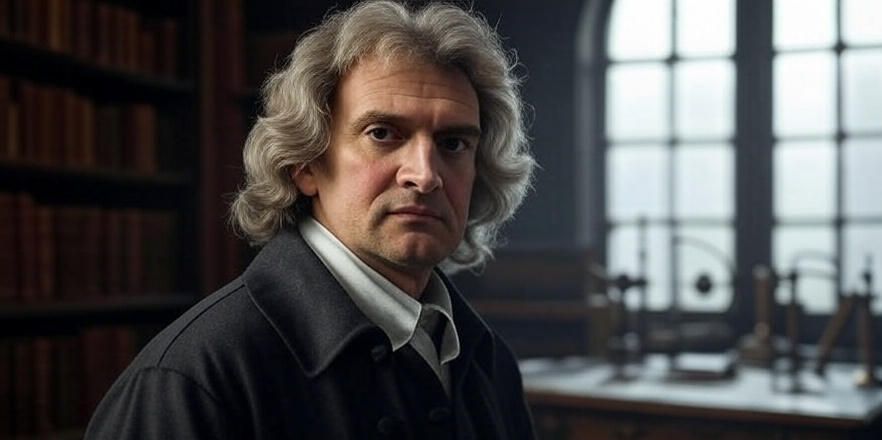
Isaac Newton was born on January 4, 1643 (according to the Gregorian calendar), in Woolsthorpe, a small village in Lincolnshire, England. His birth came at a challenging time—his father, a farmer also named Isaac, died three months before he was born, and his mother, Hannah, remarried when Newton was just three years old. Raised partly by his grandmother, young Isaac grew up in relative isolation, which may have contributed to his introspective and solitary nature.
As a child, Newton showed an early knack for mechanics, building models like windmills and kites that demonstrated his curiosity about how things worked. Despite his mother’s initial desire for him to become a farmer, Newton’s intellectual gifts were undeniable. At the age of 12, he was sent to King’s School in Grantham, where he excelled in his studies. His academic prowess earned him a place at Trinity College, Cambridge, in 1661, where he began his journey into the world of science and mathematics.
At Cambridge, Newton was exposed to the works of great thinkers like Aristotle, Descartes, and Galileo. However, it was his own insatiable curiosity and rigorous approach to problem-solving that set him apart. During his time at university, Newton began to develop ideas that would later revolutionize science.
𝗧𝗵𝗲 𝗔𝗻𝗻𝘂𝘀 𝗠𝗶𝗿𝗮𝗯𝗶𝗹𝗶𝘀: 𝗡𝗲𝘄𝘁𝗼𝗻’𝘀 “𝗠𝗶𝗿𝗮𝗰𝗹𝗲 𝗬𝗲𝗮𝗿”
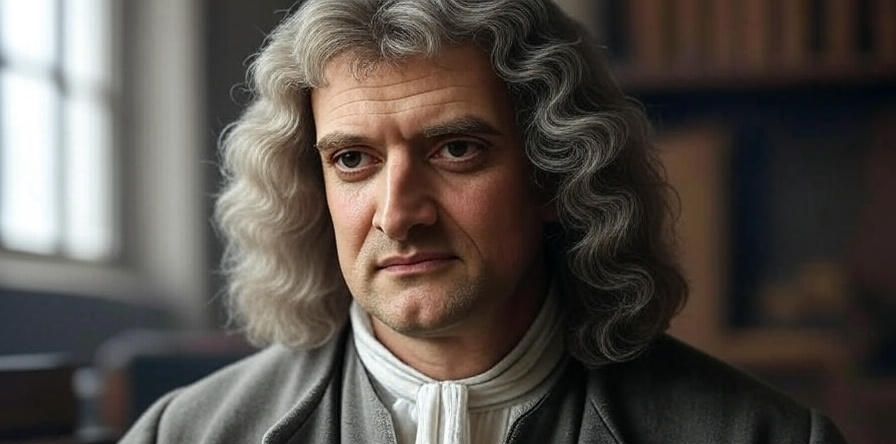
In 1665, when Newton was just 22 years old, the Great Plague swept through England, forcing Cambridge University to close temporarily. Newton returned to his family’s home in Woolsthorpe, and it was during this period of isolation—often called his annus mirabilis or “year of wonders”—that he made some of his most significant intellectual breakthroughs.
One of the most famous stories about Newton involves an apple falling from a tree, sparking his thoughts about gravity. While the apple story may be partly legend, it symbolizes the moment when Newton began to formulate his ideas about why objects fall to the ground and why planets orbit the sun. This led to his development of the Universal Law of Gravitation, a cornerstone of modern physics.
During this same period, Newton made significant advances in mathematics, particularly in the development of calculus. Although there was later controversy over whether Newton or German mathematician Gottfried Wilhelm Leibniz invented calculus first, Newton’s work laid critical groundwork for this field, which is essential for understanding rates of change in everything from physics to economics.
Newton also conducted experiments with light, discovering that white light is composed of a spectrum of colors. By passing light through a prism, he showed that sunlight could be split into a rainbow of colors and then recombined into white light. This work in optics was groundbreaking and challenged the prevailing ideas of his time.
𝗡𝗲𝘄𝘁𝗼𝗻’𝘀 𝗟𝗮𝘄𝘀 𝗼𝗳 𝗠𝗼𝘁𝗶𝗼𝗻
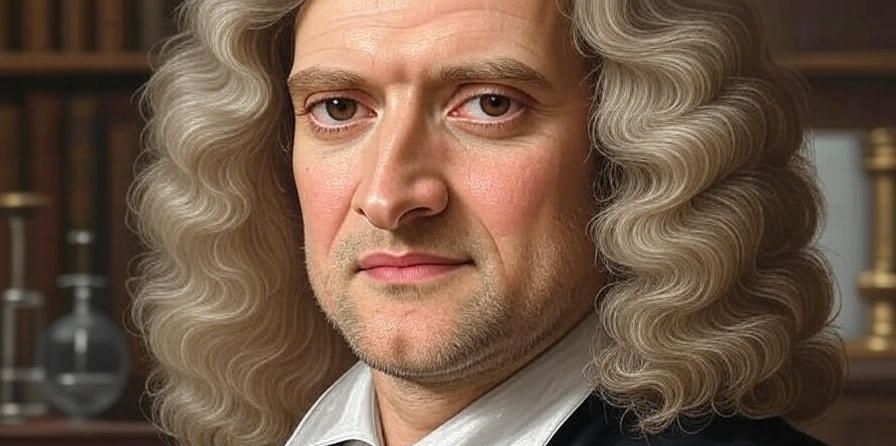
Perhaps Newton’s most famous contributions to science are his three laws of motion, published in his seminal work, Mathematical Principles of Natural Philosophy (Philosophiæ Naturalis Principia Mathematica), commonly known as the Principia, in 1687. These laws form the foundation of classical mechanics and describe how objects move and interact. Let’s break them down in simple terms:
✓ First Law (Law of Inertia): An object at rest stays at rest, and an object in motion stays in motion with a constant velocity, unless acted upon by an external force. This means that things don’t start or stop moving on their own—something has to push or pull them.
✓ Second Law (Law of Acceleration): The force acting on an object is equal to its mass multiplied by its acceleration (F = ma). This law explains how much force is needed to move something and how that movement changes depending on the object’s mass.
✓ Third Law (Action-Reaction): For every action, there is an equal and opposite reaction. This means that forces always come in pairs—if you push against a wall, the wall pushes back with equal force.
These laws may sound simple, but they were revolutionary at the time. They provided a unified framework for understanding the motion of everything from a falling apple to the planets in the sky. Newton’s laws are still used today in fields ranging from engineering to space exploration.
𝗧𝗵𝗲 𝗟𝗮𝘄 𝗼𝗳 𝗨𝗻𝗶𝘃𝗲𝗿𝘀𝗮𝗹 𝗚𝗿𝗮𝘃𝗶𝘁𝗮𝘁𝗶𝗼𝗻
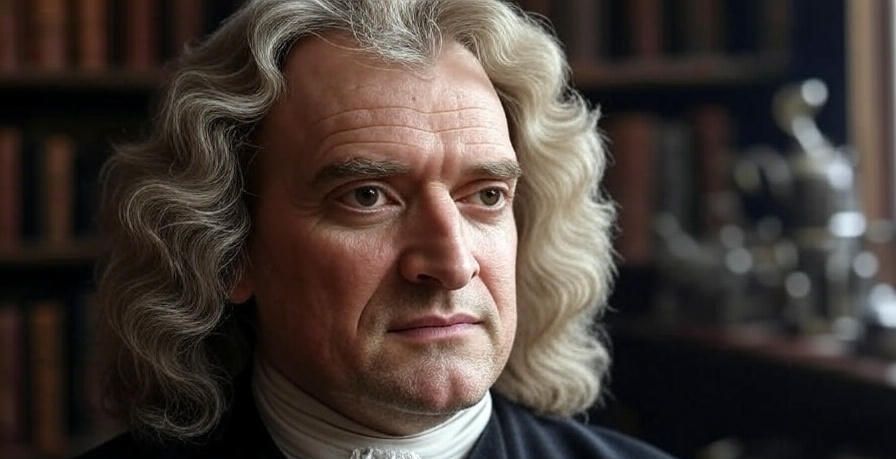
Another monumental achievement in the Principia was Newton’s formulation of the Universal Law of Gravitation. He proposed that every object in the universe attracts every other object with a force that depends on their masses and the distance between them. In mathematical terms, the force of gravity is proportional to the product of the two masses and inversely proportional to the square of the distance between them.
This idea was groundbreaking because it explained not only why objects fall to the ground but also why the moon orbits the Earth and why the planets follow their paths around the sun. Before Newton, astronomers like Johannes Kepler had described how planets move, but Newton provided the why—a single force, gravity, governs it all.
The story of the apple falling from the tree, while possibly exaggerated, captures the essence of Newton’s insight: he saw a connection between everyday phenomena (like an apple falling) and cosmic events (like planetary orbits). This unified view of the universe was a turning point in scientific thought.
𝗡𝗲𝘄𝘁𝗼𝗻’𝘀 𝗪𝗼𝗿𝗸 𝗶𝗻 𝗢𝗽𝘁𝗶𝗰𝘀
In addition to his work in mechanics and mathematics, Newton made significant contributions to the study of light and optics. In the 1660s, he conducted experiments with prisms, showing that white light is made up of all the colors of the rainbow. This discovery challenged the prevailing belief that light was a single, pure entity.
Newton’s experiments involved passing sunlight through a prism, which separated it into a spectrum of colors. He then used a second prism to recombine the colors into white light, proving that the colors were inherent in the light itself, not created by the prism. This work laid the foundation for the field of optics and influenced later developments in physics and technology.
Newton also designed and built the first reflecting telescope, known as the Newtonian telescope, which used mirrors instead of lenses to collect and focus light. This design was a significant improvement over earlier telescopes, as it reduced distortions and allowed for clearer observations of the stars and planets. Reflecting telescopes are still used in astronomy today.
𝗧𝗵𝗲 𝗣𝗿𝗶𝗻𝗰𝗶𝗽𝗶𝗮 𝗮𝗻𝗱 𝗜𝘁𝘀 𝗜𝗺𝗽𝗮𝗰𝘁
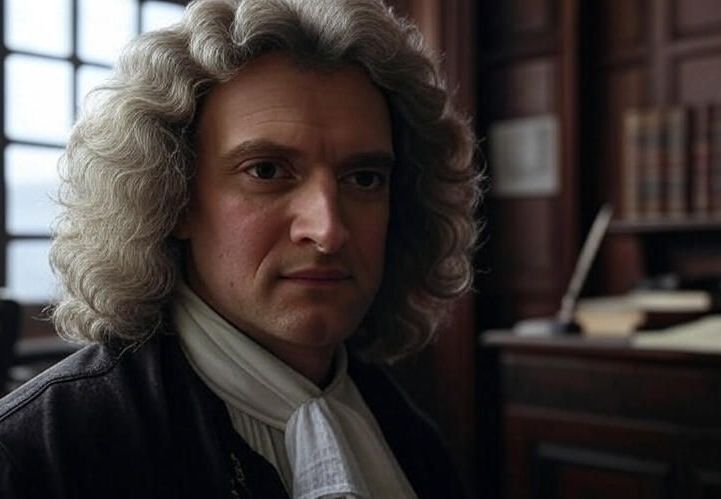
The publication of the Principia in 1687 was a landmark event in the history of science. Written in Latin and filled with complex mathematical arguments, the Principia was not an easy read, even for scholars of the time. However, its ideas were so profound that they reshaped scientific thought.
The Principia introduced a new way of doing science, one based on precise mathematical laws and empirical observations. This approach, often called the Newtonian method, emphasized the importance of testing theories against real-world evidence. It became the blueprint for modern science, influencing fields as diverse as physics, astronomy, and engineering.
The Principia also solidified Newton’s reputation as one of the greatest minds of his era. It earned him international acclaim and cemented his place in the scientific community. However, Newton’s success did not come without controversy—he was known for his fierce disputes with other scientists, including Robert Hooke and Leibniz, over credit for his discoveries.
𝗡𝗲𝘄𝘁𝗼𝗻’𝘀 𝗟𝗮𝘁𝗲𝗿 𝗬𝗲𝗮𝗿𝘀
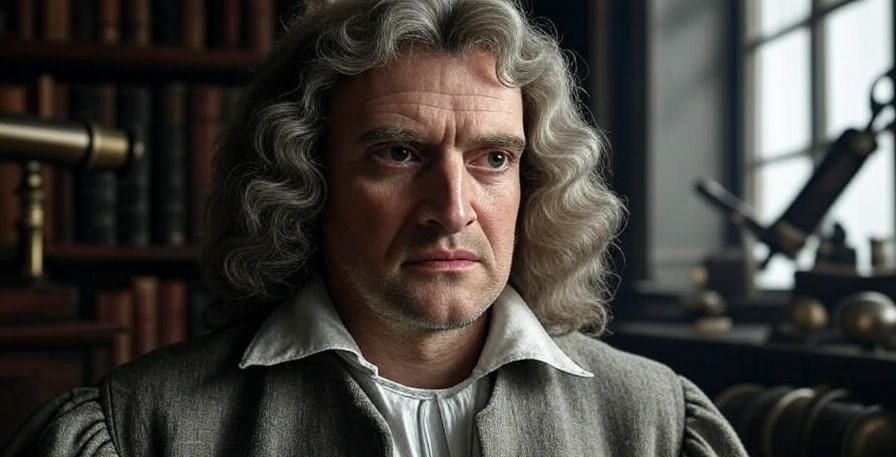
In the 1690s, Newton’s life took a different turn. After suffering a nervous breakdown, possibly due to overwork and stress, he left Cambridge and took up a position as Warden of the Royal Mint in London. In this role, he was responsible for overseeing the production of England’s currency and cracking down on counterfeiting. Newton approached this job with the same rigor he applied to his scientific work, reforming the mint and improving the quality of England’s coinage.
In 1703, Newton was elected president of the Royal Society, a prestigious scientific organization, a position he held until his death. He was knighted by Queen Anne in 1705, becoming Sir Isaac Newton, a rare honor for a scientist at the time.
Newton continued to refine his scientific ideas in his later years, publishing revised editions of the Principia and other works. He also delved into theology and alchemy, subjects that fascinated him throughout his life, though these pursuits are less well-known today.
𝗡𝗲𝘄𝘁𝗼𝗻’𝘀 𝗣𝗲𝗿𝘀𝗼𝗻𝗮𝗹𝗶𝘁𝘆 𝗮𝗻𝗱 𝗖𝗼𝗻𝘁𝗿𝗼𝘃𝗲𝗿𝘀𝗶𝗲𝘀
While Newton’s genius is undeniable, he was a complex and often difficult person. He was known for his intense focus and determination, but also for his prickly personality and tendency to hold grudges. His disputes with other scientists, particularly Hooke and Leibniz, were bitter and public, revealing a competitive side to his character.
Newton was also deeply private and solitary, preferring to work alone and often shying away from public attention. Despite his fame, he remained humble about his achievements, famously saying, “If I have seen further, it is by standing on the shoulders of giants.” This quote reflects his recognition of the contributions of earlier scientists, even as he pushed the boundaries of knowledge far beyond their work.
𝗡𝗲𝘄𝘁𝗼𝗻’𝘀 𝗟𝗲𝗴𝗮𝗰𝘆
Isaac Newton died on March 31, 1727, at the age of 84. His contributions to science, mathematics, and astronomy have left an indelible mark on the world. The laws of motion and universal gravitation remain foundational principles in physics, and his work in calculus and optics continues to influence modern science and technology.
Newton’s ideas helped usher in the Enlightenment, a period of intellectual and scientific progress that transformed society. His emphasis on reason, observation, and mathematical precision inspired generations of scientists, from Albert Einstein to Stephen Hawking. Even today, engineers use Newton’s laws to design bridges, cars, and spacecraft, while astronomers rely on his insights to study the cosmos.
Beyond his scientific achievements, Newton’s life is a testament to the power of curiosity and perseverance. Born into modest circumstances, he overcame personal and professional challenges to become one of the greatest minds in history. His story reminds us that groundbreaking discoveries often come from asking simple questions—like why an apple falls from a tree—and pursuing the answers with relentless determination.
𝗡𝗲𝘄𝘁𝗼𝗻’𝘀 𝗥𝗲𝗹𝗲𝘃𝗮𝗻𝗰𝗲 𝗧𝗼𝗱𝗮𝘆
In the 21st century, Newton’s work remains as relevant as ever. His laws of motion are taught in schools around the world, and his ideas about gravity underpin our understanding of everything from satellite orbits to black holes. The Newtonian telescope design is still used in observatories, and calculus is a vital tool in fields ranging from artificial intelligence to economics.
Moreover, Newton’s approach to science—combining rigorous mathematics with careful observation—continues to guide researchers today. In an era of rapid technological advancement, his emphasis on evidence-based reasoning is a reminder of the importance of grounding innovation in solid principles.
𝗖𝗼𝗻𝗰𝗹𝘂𝘀𝗶𝗼𝗻
Isaac Newton, the father of modern science, was a visionary whose ideas transformed our understanding of the universe. From his laws of motion to his theory of gravity, his discoveries laid the groundwork for centuries of scientific progress. His life, marked by brilliance, perseverance, and occasional controversy, serves as an inspiration to anyone curious about the world.
Whether you’re marveling at the orbit of a planet, designing a new machine, or simply watching an apple fall, Newton’s legacy is all around us. His work reminds us that the pursuit of knowledge is a powerful force, capable of unlocking the mysteries of the cosmos and changing the course of history. As we continue to explore the universe, we do so in the footsteps of a giant—Sir Isaac Newton.
